During the course of 2022, debates began to rage about the use of AI as its own method of creating imagery, as numerous machine learning (ML) platforms began to open themselves up to the public, thus, allowing for them to be used by anyone, and everyone. For the very first time in human history. Suddenly, it was possible to create an image that might have once taken an artist, such as a traditional oil painter—depending on the scale—months or even years, to create. Along with establishing open access to these ML platforms, which had often, been in development for half a decade or longer, came the trite criticism of these tools taking the place, or even replacing, long ‘established’ artists. The stance was in a similar vein to the way that photography was criticized during its own early days, by those who saw its use in assisting the work of artists, amounting to nothing short of ‘cheating’, and at its worst, being a certain criminality against the arts. In an article entitled ‘Photography as an aid to Portrait Painting’ published in The New York Times, from 1866—which was heavily circulated on Twitter this autumn—the paper wrote that, ‘Let us readily grant that photography is not a fine art itself, neither can it possibly take the place of any intellectual work; that it can exercise none of the selection, modify no expression, raise no emotion, evoke no sympathy; and although it can never raise us to the contemplation of any spiritual truth, it reproduces accurately the aspect of the material universe.’ Photography has clearly come a long way since 1866, and is of course, today, considered a fine art no doubt. Look no further than the countless art museums across the globe, who have entire departments devoted to the medium of photography, its curation, its exhibition activities, as well as the conservation of such works in their collections.
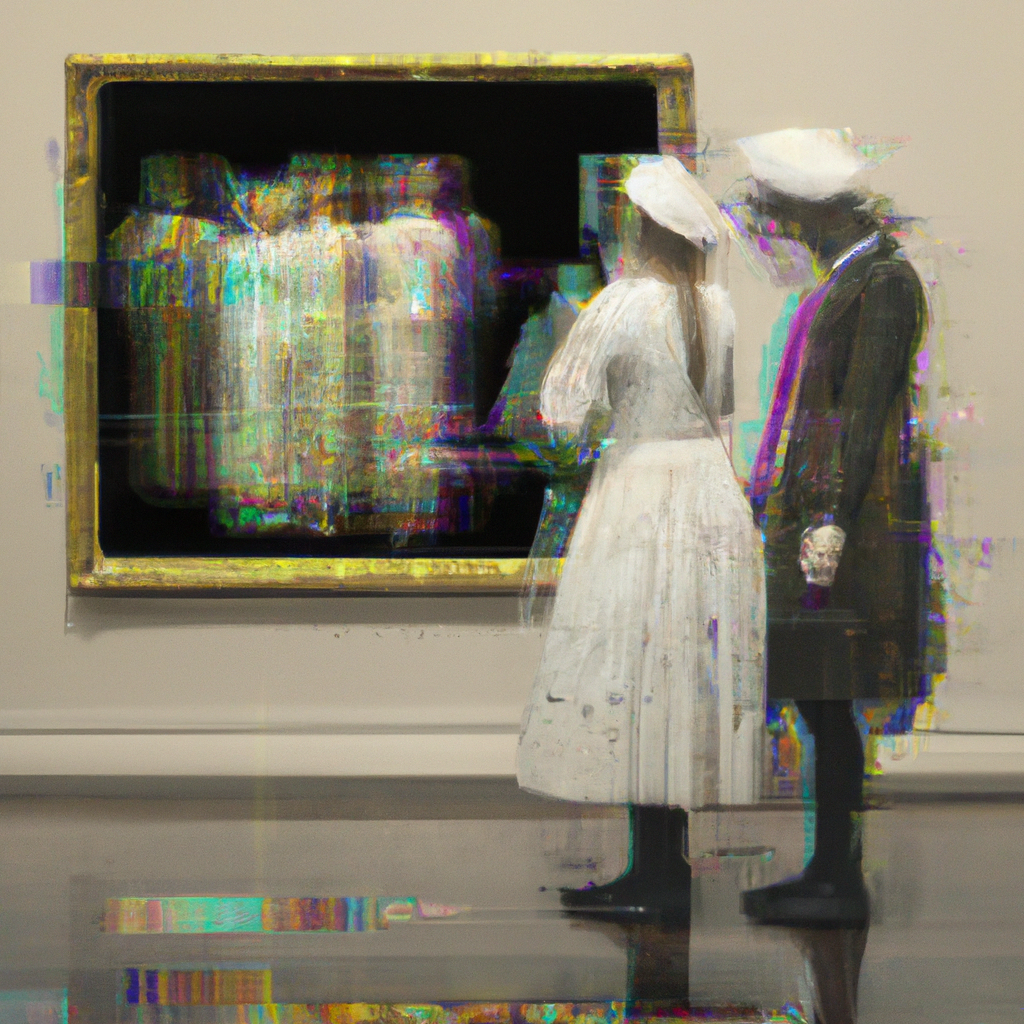
Yet just as The New York Times was, in 1866, ready to promulgate that photography itself was not a fine art, within the same breath; within the same article it readily defended the medium as creating new developments within the then leading medium, in the field of the fine arts: oil painting. So the article continues: ‘…it is impossible to overlook the influence which for good or evil, is now being exercised, and probably will be exercised through all future time, by the marvelous discovery of photography, and its application to the ends of paintings… At present, it is, for the most part, neglected by those who might well profit by its help, and debased by the modifications of sixth-rate miniature painters, so that many of our portrait painters are half afraid to make use of it, and altogether afraid to acknowledge its value. That it must eventually be the means of raising the art of portraiture to a more subtle and higher rendering of truth, we firmly believe.'1 And so began, at least within the pages of The New York Times, in the last week of June of 1866—little over a year after the American Civil War had ended—a debate about the nature of the then-new medium of photography, and its effects, and affects, on the fields of the fine arts of the time. The article is here referenced to draw parallels to similar modes of thinking that have recently emerged around the use of AI to create new forms of visual expression—some of it deemed as art on the part of its creators—with others only using it for fun. It’s often the latter who tend to decry its use as not being ‘art’. For some people—including long-established artists—AI is only a tool; while to others, it’s the next frontier of creativity. Both views are correct. And so to dismiss AI art today, as not art, parallels prior thought that photography, is not fine art.
In order to help create a kaleidoscopic viewpoint on AI artwork, the ways that it can be created, and the methods and processes involving AI used to create it, as well as to better understand what such processes involved in its genesis entail; I spoke to several artists since the summer of 2022, interviewing them about their thoughts on these pressing topics about artworks created in tandem with AI. DALL·E2 and Stable Diffusion, at the end of 2022, also seem to be the most favored, in assisting some of the more innovative AI artists currently minting their work on the Tezos blockchain—such as Francien Krieg, who is also an artist working in oil paints; Ai Machina; YankelVision; Marco DeAngelis; Olena Speakingtomato; and DehiscenceArt. Their answers should be seen as complementary to the questions and ideas that are raised throughout this essay, and they shine a spotlight on what concerns AI artists working, today; how they create their works and the steps involved in doing so; and the importance of their use of prompts within their work, and the varying shades of secrecy each impart upon and within them. To further splinter the ideation and creation of AI artworks: some artists that I spoke with make use of AI’s raw output as their final product, while others make use of one or even multiple AI platforms and programs, which they then post-produce and rework and rework, again and again. The same is true of artists who rework their prompts, fine-tuning them as they continue their process of creation. Is that still ‘AI art’? While the answer is yes, such a process complicates and nuances the AI art discussion that remains raging, at the end of 2022. Creating AI artworks, it would seem, is metaphorically similar to the slow unveiling of a sculpture from, for instance, a block of marble on the part of a sculptor; only over time, with repetition, reevaluation, and reworking—using post-production, or not—does the final result emerge.
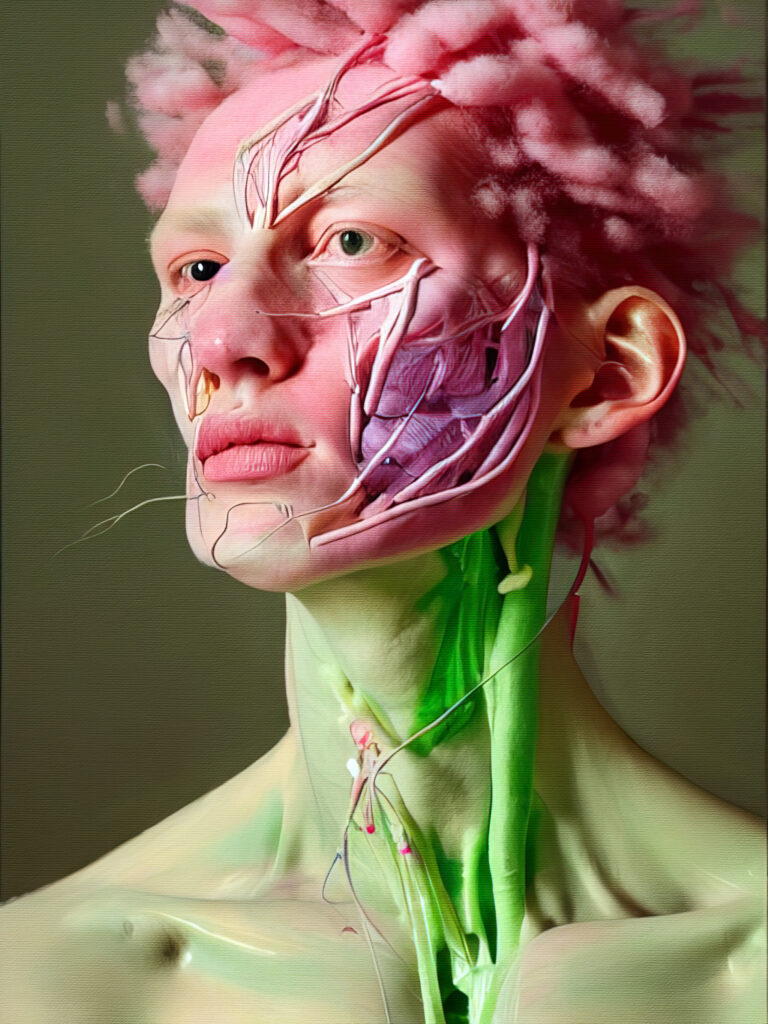
Some artists making use of AI, today, are more than satisfied with the results of such a platform’s raw output; preferring to ‘rework’ and post-produce, using only the re-refinement of their prompts, and with minimal external reworking to compose their final piece. One such artist is YankelVision, who explains: ‘All of my work is “raw AI”, meaning that I do no post-processing on the images, with the exception of removing the DALL·E2 “signature” in the lower right in some of my artworks. My exploration of using AI as a creative tool is one that partially focuses on ideas of authorship and intent. Like the cut-up poems of the Dadaists; raw AI raises excellent and interesting questions about intent and authorship. To that end, I prompt DALL·E2 until I find an image that I am happy with, one that will stand on its own with no post-processing. I am upfront about my works being raw AI, with no post-processing, because I want to engage the viewer with questions about intent, authorship, and the act of creation.’ While other AI artists, such as Marco DeAngelis, prefer and even insist on post-production within their working process: ‘Post-production is integral to my work. Sometimes I feel that the raw results match what I was looking for, but more often the AI alone is not fitting enough. Compositing and editing (that is, the human brain) drive the piece fully into what your art is meant to be. This concerns everything, from the detail to overall composition.’ In this, he is not alone, with Dehiscence, Olena, and Ai Machina implementing similar processes within their own artworks’ processes of creation, when working toward, their final works.
Explains Dehiscence, ‘I like to have as much control and manual input I can over the final image, so I almost always do some post-production editing. I normally have batches of hundreds of images which I curate down to 10-20. I then take them to next stage which may include, basic things like, color correction or removing blemishes or more complex edits like overpainting or collage, whatever I see fit. I then curate that list down to the final image. I may or may not use one of my artworks as an initial image to get it all started, and/or run the image through AI at the end of the process to finish it off. Sometimes it’s trial and error to see what works best for the story I am telling.’ Expounds Ai Machina, of their take on their creation process: ‘Post-producing works generated initially with AI holds much potential for creators. There are a few reasons why post-producing results developed originally with AI can be beneficial. AI can handle large-volume workloads more efficiently than humans, which can free up time to focus on the creative aspects of the work. Additionally, AI can quickly identify and fix errors or inconsistencies, leading to a better final product. Plus, since AI can generate on the fly, it is not subject to the same creative constraints as humans, which can lead to a more creative content. Additionally, post-production processes—such as editing and formatting—typically handled by humans, can add an extra layer of inaccuracy and inconsistency to the final product. However, given the capabilities of AI, these post-production processes could be automated, leading to a higher-quality final product.’ And yet other artists post-produce, though only minimally, such as Olena, who states that, ‘Post-production serves as a link between elements created by AI, and me. It also gives the final gloss to my work.’ Just as there is no one definition of AI art; this is also no one type, of AI artist, it would seem.
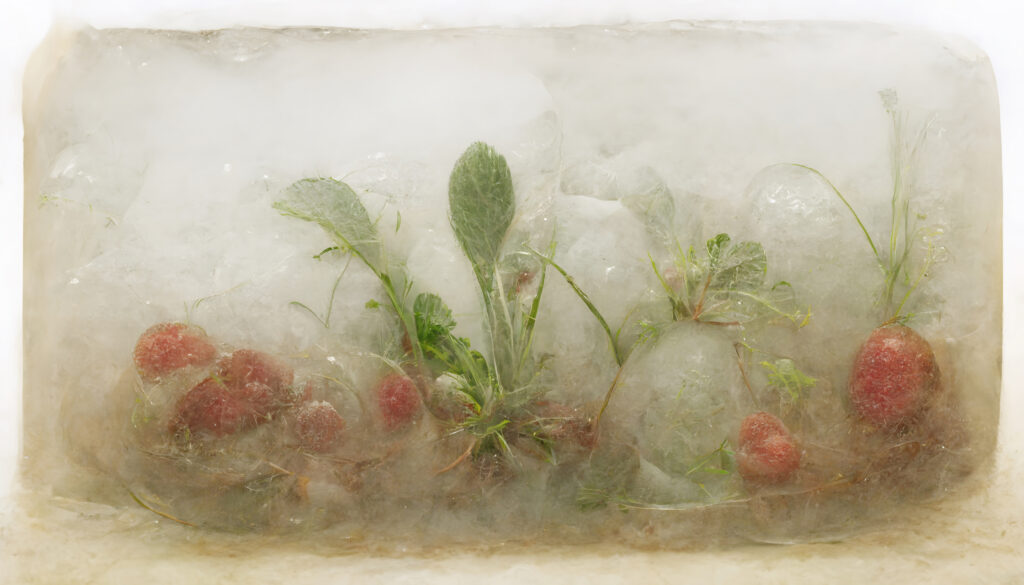
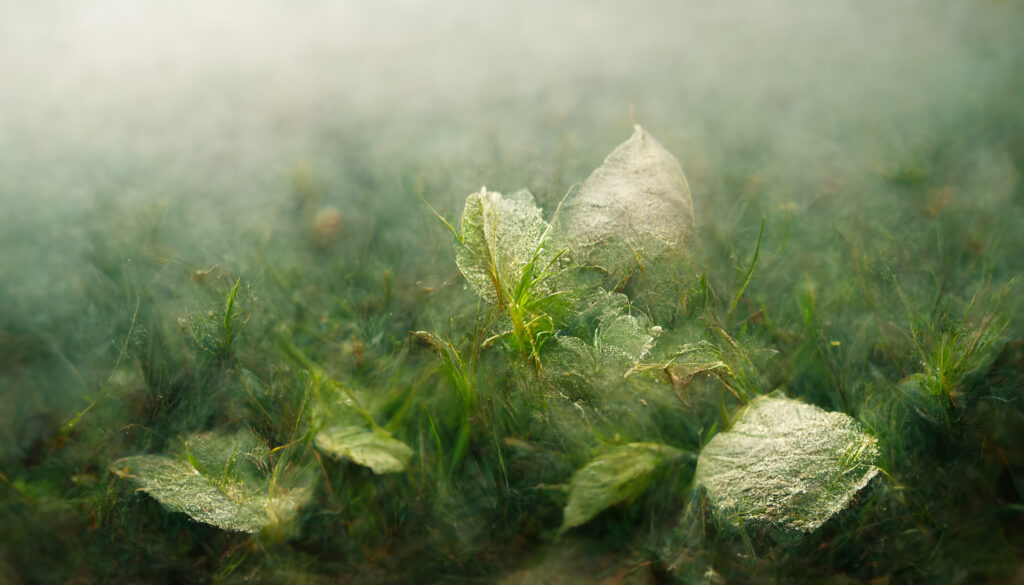
Francien Krieg, the only artist interviewed for this essay who simultaneously creates—at least in terms of minting, to the Tezos chain—in oil paints, and ‘digital paint’ using AI, states something similar, regarding only lightly using post-production: ‘I use Photoshop, though I do not change too much from the initial AI outcome. From the hundreds and hundreds of AI results, I just use a few. I am rather critical in deciding when something is art for me and when it is not. Sometimes I feel more like an art curator than an actual artist when using some of these platforms. Normally, in my oil paints, I work with live models, so the challenge for me is to get results from AI which are as close to real human emotions and bodies as possible. It’s also important for me to really know my models, and how that affects my motivation to want to paint someone and really put my heart and soul into it. Also, for viewers and collectors of my AI art—I often wonder if the story behind the painting matters or if only the result is important. That is the whole question with AI versus oil painting, in my opinion; the knowledge of all the effort which has been made for an oil painting compared to an AI work—does such a distinction matter for NFT collectors and audiences? Until now, in the NFT space, I often get the impression that it doesn’t. It’s about the image; and nothing more. But for the world of art museums and traditional galleries, art collectors, and art lovers, it does make a difference, knowing the importance of history and story behind an artwork.’
These various-ranging thoughts on post-production, show that not all artists using AI adhere to one mode or type, of production. Meaning ‘AI art’, is not a singular ‘thing’ but instead, an incredibly fluid term that denotes the use of AI in a final work of art—fully produced with AI, or not, and regardless of post-production. Francien further explains, about her work in oils in relation to AI, that, ‘It often feels like I am looking at creations from the Old Masters when I look at many AI outcomes. I can learn from it and even use it in my own work. Although I do find the AI artworks being created today, a bit too hard compared to the softness of real brushstrokes; I see that the machine was probably fed with loads and loads of work from the Old Masters. I am still not sure how all this will develop, when looking at my AI works, compared to my oil paintings. It sure is an exciting time to live in, in 2022, for artists—where there are so many new tools to play with. However, the question is: which process of what medium do I enjoy the most? Well, I really do hope that AI works will make my oil oeuvre even stronger, and that they can go hand in hand.’
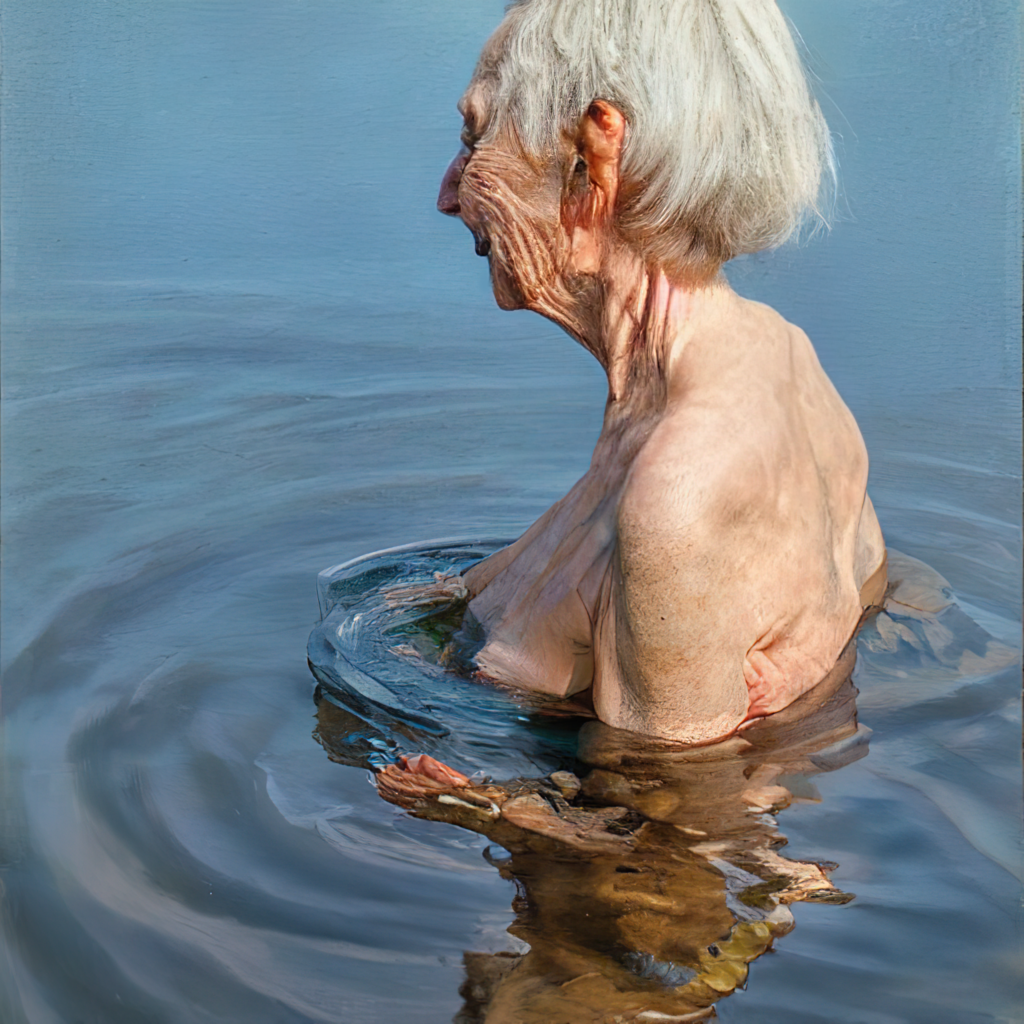
And so we’re brought to the question: what is art? As the distinguished art theoretician Esther Pasztory states in her collection of essays, Thinking with Things, on an essay by Thomas McEvilley; art can be summarized by four various, current definitions: art can be formal, that is, based on its form; art can be based on its content, which is the idea that art is expression and not form; art can be designated as such, literally by anyone, regardless of its form or content; and art can be honorific, which is to say that ‘art’ is, ‘a way of designating its importance and value and has another meaning.’2 When utilizing this framework through which to confront, view, evaluate, and appreciate art—by literally making use of its quadruple categories, and applying them to defining art—it is quite understandable, that AI art, being digital by nature, might seem to lack the formal elements of art that are literally present in the work of a centuries old painting, or a millennia old sculpture. Who could discount the thickened impasto of cloth and jewelry adorning a figure inhabiting a celebrated painting by Rembrandt, or discount the aged tactility of the bronze of the twisting tails of the three snakes that compose the Serpent Column, from the fifth century BCE, today standing in Istanbul. Those who criticize artwork created entirely with, or even assisted by, AI, often do so while having no experience with that same AI technology; or do so from a vantage point that emphasizes the physicality of art, as that found in ‘surveying’ art museums—such as London’s National Gallery, or Madrid’s Prado. Yet, intriguingly, AI art can be and very often is, inhabiting all four categories that McEvilley defined as art, in his essay that Pasztroy makes reference to above.
Ai Machina neatly summarized current debates of AI art, in a Twitter Spaces from November 2022, when noting some of the more ridiculous claims that have been made about such art itself: ‘The complaint is that AI somehow takes hold of everything that is on the internet, to compose the image the artist wants to make. Including artists’ styles, whether dead or alive. Somehow these fools blame the AI for it… This absurd argument is like complaining that an artist who paints a horse can’t be considered original if they used references from books, photographs; even a real horse. Absurdly inferring that this painter should have produced a painting of a horse from no reference or knowledge of a horse; not even technical painting skills. Do you see the absurdity of this? Even more absurd is when these naysayers go on Twitter Spaces arguing that this is somehow AI’s fault. For example, let’s say someone is tasked with making a presentation about cats. And goes on the internet and downloads cat pictures and puts them in their presentation. Using Photoshop, the question is: whose fault is it to be using the cats’ photos? And who decides the intended purpose of this presentation? Whether to publish it as their own, just show it to their grandmother, blame the internet, photoshop, the people who posted the cat pictures… The point is; humans are willing to limit AI technology to limit the ethical and moral responsibility of their actions. It isn’t about what the AI produces or how it does it; it’s about how people use it. And some people are not going to stop doing things based on their limited visual knowledge’.3 The use of AI to create works of art that are both timeless, valued, and seductive, requires an astute visual acumen; not everyone can be an AI artist just because AI exists. Just as not everyone who picks up a camera is instantaneously a fine art photographer; it is the mind of the artist who creates the art, not the camera.
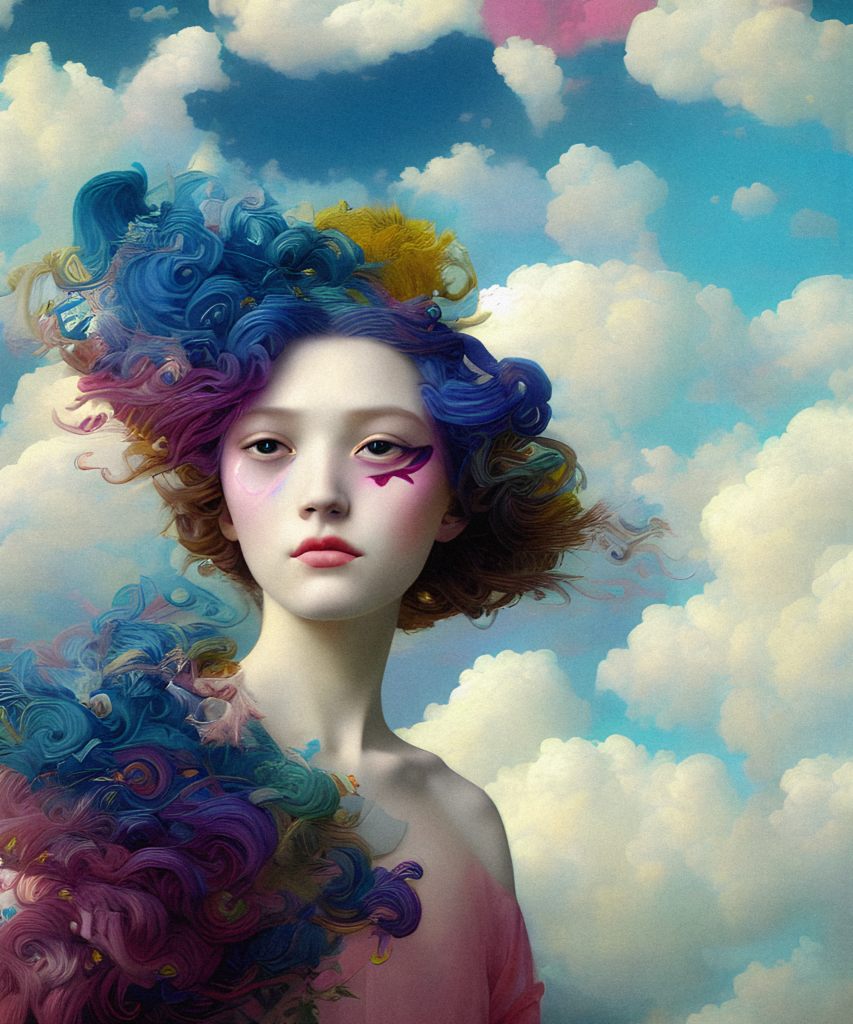
ML platforms such as Midjourney, DALL·E2, and Stable Diffusion—among a few others that are perhaps lesser used, even as these three are the leading platforms, as of late-autumn 2022—each come with their own user interface, as well as their own built-in advantages and shortfalls, depending on what the user of each hopes to achieve in their output. Similar to a knife, which can be held by its handle, or—rather painfully—by its blade, thus being of service, or detriment, to the person holding it; ML platforms used for the purpose of image creation, are perhaps best approached by harnessing their metaphorical ‘knife handles’, and using each, as a tool to assist and thus help. And in this sense, these platforms are indeed quite similar to picking up a camera; the result of what the camera ‘captures’ or creates, depends on the intention of its user. AI’s output depends on its users’ intentions. And so, someone making use of these ML platforms to create art—like much of life, itself—often depends on what it is that they bring to it. Does the person using the platform have a comprehensive knowledge of art history, or not; does that same person have clear intentions of their desired output; does that same person have their own sense of self, individuality, style, and modes of self expression already ‘built in’ them? If not, of course, the chances that the output will be exciting, new, or interesting, are slim to none—much like the person prompting and manipulating the same inputs that churned out those results, to begin with. The use of AI, as an aid to expression of visual language, makes uses of the written language and demands a certain sense of complexity of creativity of thought of its user. It is, therefore, often an expression of individual thought. As no two minds are alike; no two AI artists—with their unique backgrounds—are alike, either.
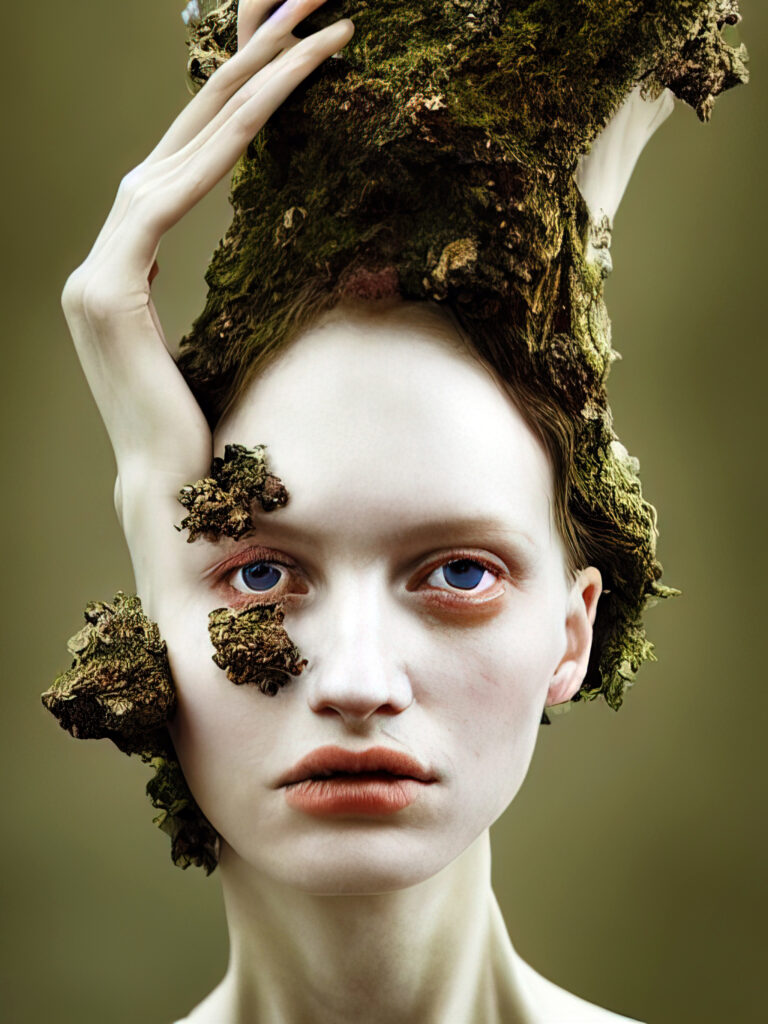
Which of these platforms an artist chooses to use, or even prefers, will also, further dictate the look-and-feel of their work, in some sense, depending on how that same platform is operated. Some AI artists interviewed for this essay have their favorites; others are open to using multiple, or see advantages in each; while others use them repeatedly, constantly bringing images created in one platform, into another, only to then use that just-created-output to place back into yet another. In this last instance, Dehiscence is the artist, of those included in this essay, who utilizes such a process the most: ‘I use multiple ML platforms and sometimes more than one to create any given artwork. The AI tools I am currently using are Stable Diffusion for still images, and Deforum for animations, with the occasional dip into Midjourney and DALL·E2. I have recently trained my own models and I have been using those in Stable Diffusion, but I still use the standard models as well. I use multiple AI tools because I like to experiment, but also because you get different “looks” depending on which AI you use. For instance, I may make an image with Stable Diffusion, take it into DALL·E2 for outpointing then bring it back to Stable Diffusion for a light run to make the image more cohesive. Or I may take two images from Stable Diffusion and combine them using V4 of Midjourney. It all depends on how I want the final images to look.’
Olena uses a similar process, observing of her own work that, ‘In the early days of AI, I used Midjourney, like a lot of people. It was a time of wonders when every second you expected a result and the AI response was sometimes wholly unpredictable. Now I look at these works and realize that in three months, along with the evolution of AI, I have travelled the path that a child might take from grade school, to university. Today I work mostly in DreamStudio (and, very rarely, in Stable Diffusion, in collaboration for video, only). I also use inpainting in DreamStudio and Runway, in my future work. A lot of it, actually. Separately, I may need the help of Face Restoration in GFPGAN. I also use AI to do the final upscale. As a rule, these are several tools I use the most: neural.love, SwinIR, and Colab-ESRGAN. I choose the best result or combine the work of several of them. The reason for these combinations is always the same, of course, and that is: to achieve the best result.’ Lastly, other artists, tend to have their favorites that they choose to stick with, and which they’ve mastered, and so have tended to remain with, at least until now; with Marco firmly stating, ‘I’ve settled on Stable Diffusion, which I think best suits my aesthetics. After testing some of them for a couple of months, it’s good for me to focus solely on art rather than going deeper into technical aspects. At least for a while.’ YankelVision is similar, explaining that, ‘When I first started exploring AI text-to-image models, I used VQGAN+CLIP model, but my recent work is exclusively made using DALL·E2. I feel an affinity with it and am especially intrigued by its very direct interface.’
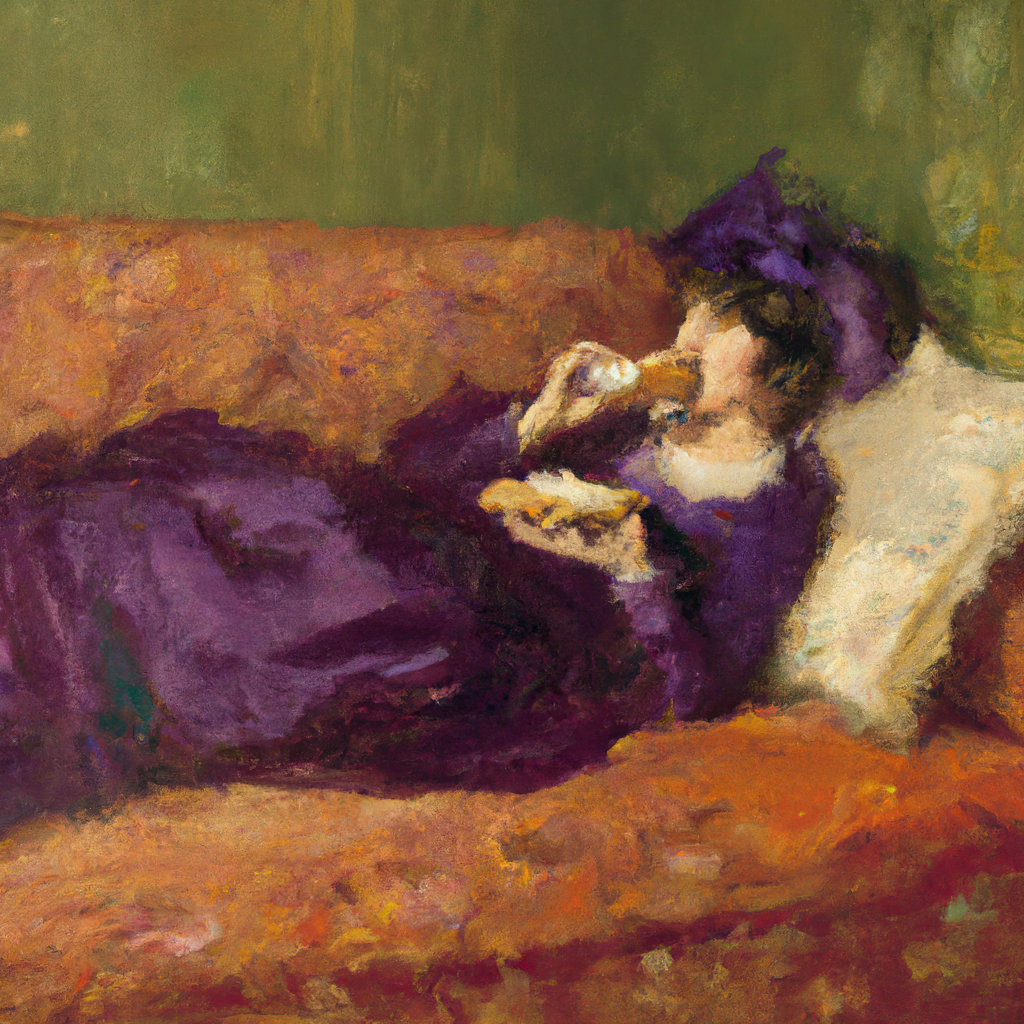
Still, there remains the argument that art created with AI is not art at all, because, as one author during 2022, so dismissingly summarized in their own myopic view of AI art, in relation to NFTs: ‘NFTs are certificates that should signify three things: an artist made the work indicated by the certificate, the certificate and the media it points to are unique, and a person owns the media indicated by the certificate. AI-generated NFTs break two of these three tenets. The artist did not make the image; it’s more accurate to say they found it. The work is not unique but rather a sample from a stream of infinite images. The token can still be owned, of course. Perhaps AI-generated NFTs are like a picture of a fisherman proudly displaying their catch. They’re proof of what was found.'4 A large portion of making use of nearly any AI platform, as any AI artist surely knows, is the continual reiteration and transmutation of their own thoughts into a concrete form that makes use of written language—which is used over and over with the slightest variations, to achieve a desired result. Sometimes, without ever achieving that result. So they begin, again. The problem with this above-quoted stance, is that it surmises that the act of thought itself—such as that used for the refining of prompts used with ML platforms—is not work; which is of course, entirely, utterly, ridiculous. Tell any academic, or seasoned writer for that matter, that thought in and of itself is not work, and they’d laugh their head off at that thought alone. So, rather than getting their hands dirty—as with inks, charcoal, okras, and oils, among many other mediums used throughout millennia—AI artists are not plowing any, metaphorical fields; instead, they’re getting their minds dirty.
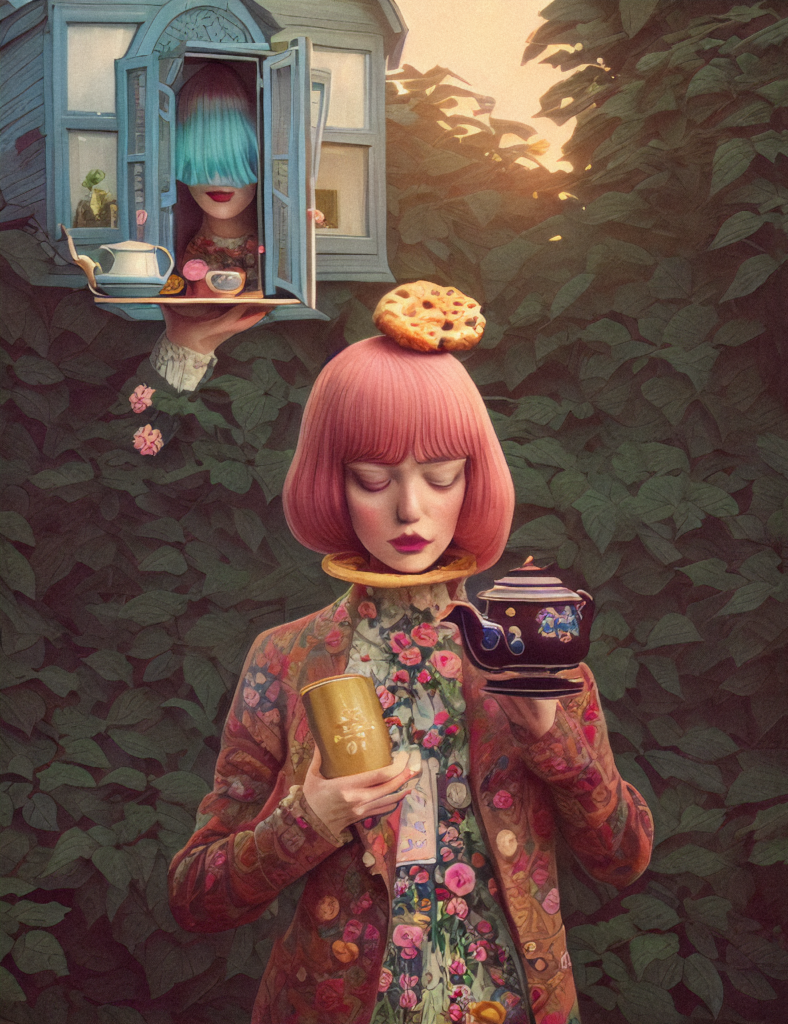
Whether or not artworks created with the assistance of AI are actually, indeed, art, or not—including as well as, regardless of whether such artworks are minted as NFTs, or not—is not at all the goal of this essay; since the answer to the question is so clearly a resounding yes. Rather, much in the same way that there were once, not curators of photography in any true sense of the word that would, today, seem familiar; its goal is instead to illuminate a new path that touches on the topics outlined so far, by taking what is now being questioned around topics of AI art, enshrining them as established, and spotlighting a possible future for AI art’s creation, curation, and connoisseurship. An artwork that is created with AI— digital by nature—is nearly always offered for sale by its artist to the public in the form of an NFT, which allows for its transfer of ownership. While there are already self-styled curators of AI art, there are also museum curators and traditional gallerists, who tend to often work in, their own forms of curation. And, most of them are already curating shows including AI artworks, which were, of course, created by artists. Interestingly, even as various blockchains make no need for the provenance of an artwork to be tracked, on paper, value of ownership of an NFT is rarely associated with provenance. Whereas provenance—those, ‘little lists’,5 which accompany paintings of enormous value, such as in museums or private collections, relay (most) previous owners; at this time, in the world of NFT and AI art, still in its first decade—very few collectors seem to care about provenance.
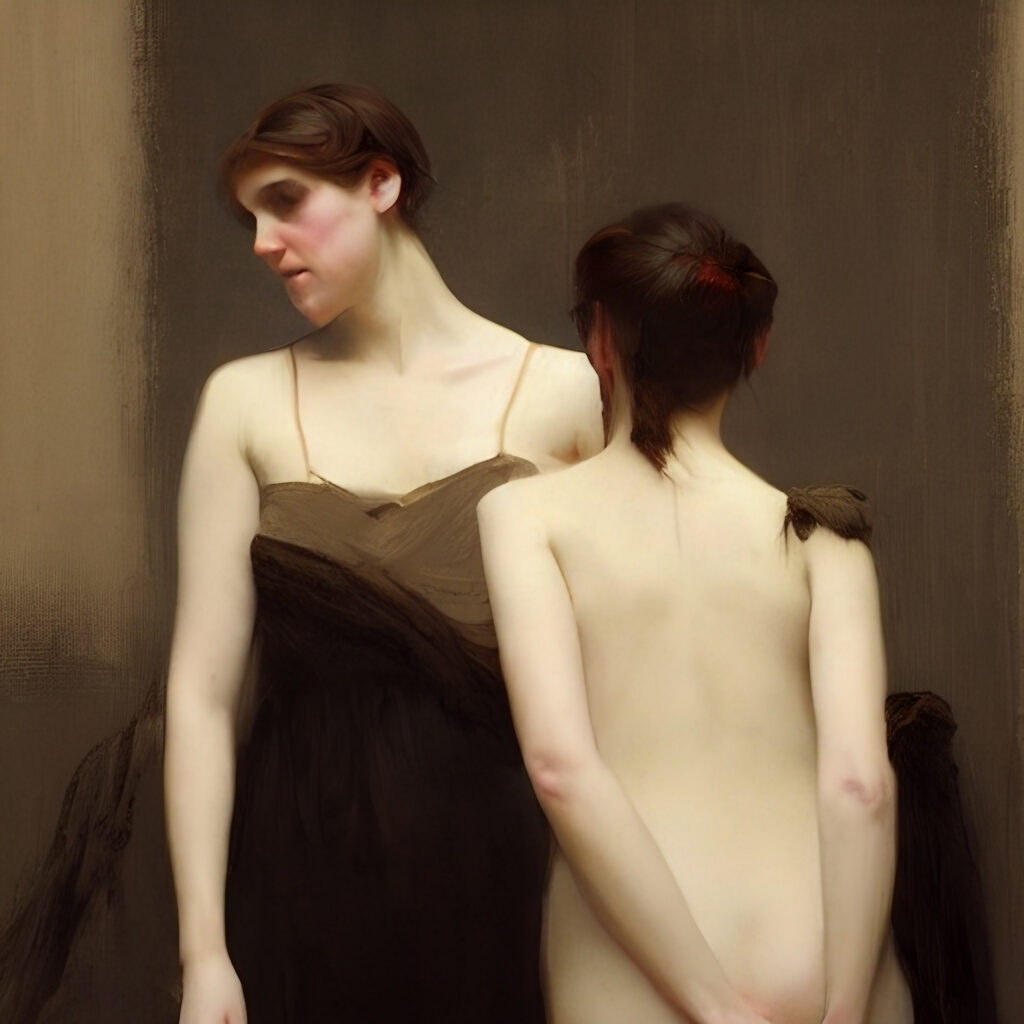
At its most basic, connoisseurship is the assessment of an artwork by a seasoned expert, who gives their informed opinion(s) based on their own broad bank of experience and knowledge, to determine who created an artwork, if the identifier of the artist is missing, today. And the practice of connoisseurship within Western art, which often entails the formal analysis of artists’ artworks, such as paintings and drawings, was written for all history by the German art historian and curator, Max J. Friedländer, (1867-1958).6 His 1942 volume outlines connoisseurship as a practice—as partially established by this German art historian—at the end of the nineteenth century and during the early twentieth century, and it remains the definitive volume produced during that era on the subject by an actual practitioner of it. Friedländer literally wrote the definitive book on art connoisseurship. It could be argued, that art connoisseurship began with the Italian artist and writer, and connoisseur himself, Giorgio Vasari (1511-1574), when he first published his 1550 Lives of the Most Excellent Painters, Sculptors, and Architects, in Florence7. Connoisseurship itself came to be ‘standardized’ throughout the late nineteenth century, in Europe, mainly due to the establishment of museums earlier in the century, and the solidification of art history as a subject of its own within European universities.8 Yet connoisseurship continues to evolve today. At its heart, is a conflict between sudden, intuitive insights claimed by some connoisseurs, regarding a painting, as opposed to a second style of connoisseurship, which seeks to check such intuitive judgments via rational, communicable arguments, so that others are also able to weigh their merit. In 1871 Giovanni Morelli (1816-1891) published a series of astute articles on the topic in the journal Zeitschrift für Bildende Kunst, in which he introduced a new method of connoisseurship: that of his own. With a background in medicine and anatomy, his approach toward connoisseurship strove for objectivism, mainly by analyzing smaller sections of paintings—such as ears, hands, and trees—with the idea, ‘that every artist developed particular forms for such anatomical parts as hands (especially fingernails) and ears, as well as for landscape details.’ Morelli thought that an ‘examination’ of such details within a painting, when contrasted against other paintings that could, with certainty, be attributed to the artist—to act as an ‘anchor’ with which to ‘check’ attributions against—would, ‘serve as accurate gauges of the individuality of an artist’s style.’9
While provenance may factor into NFT ownership more so, in the decades to come, than it currently does, in 2022; what remains of central importance to AI art today, and in the years to follow—as this essay has slowly sought to propose, as it has unraveled—is that, so too, will matters of AI art’s (notably that minted as NFTs) connoisseurship. However, it may be less concerned with art attribution, than with the artist and their mind. It is only with the passing of time that Old Master painting connoisseurship is able to exist. And the practice—as it is indeed an action—of connoisseurship, is most often applied to Old Master paintings. Though its use can also be found within ancient art, such as for works of art emanating from the Mediterranean Classical era, or the artwork produced in ancient China, such as its pottery, vases, and its own bronze statues. Connoisseurship can even be found in more, let’s call it, edible forms, such as within oenophilia. And so while AI art ownership is affixed to the blockchain, it will not always be the case, that the artist themselves who have created an AI artwork on that blockchain, will be able to be identified, say, 50 or 100 years from now. Simultaneously not all art on a blockchain, states the name of its creator. This is where AI historians—AI art connoisseurs—may come in handy, in the future. A future where, rather than focusing on an artwork’s provenance—since it will be present on the blockchain—the AI connoisseur focuses on the method of an AI artwork’s creation. And rather than identifying a work’s creator, they would instead help to ‘reposition’ the work—hundreds of years after it was created—within a ‘sea’ of AI-created artworks; much like an art curator, today. This moment in time—2022—has created and left open, a window for connoisseurship to emerge around AI-generated art, that, as this article has made increasingly clear, is now, underdeveloped. AI-generated art is not going away and will increase in prevalence in the future. So, it would be helpful to develop a connoisseurship around it; not dismiss it.
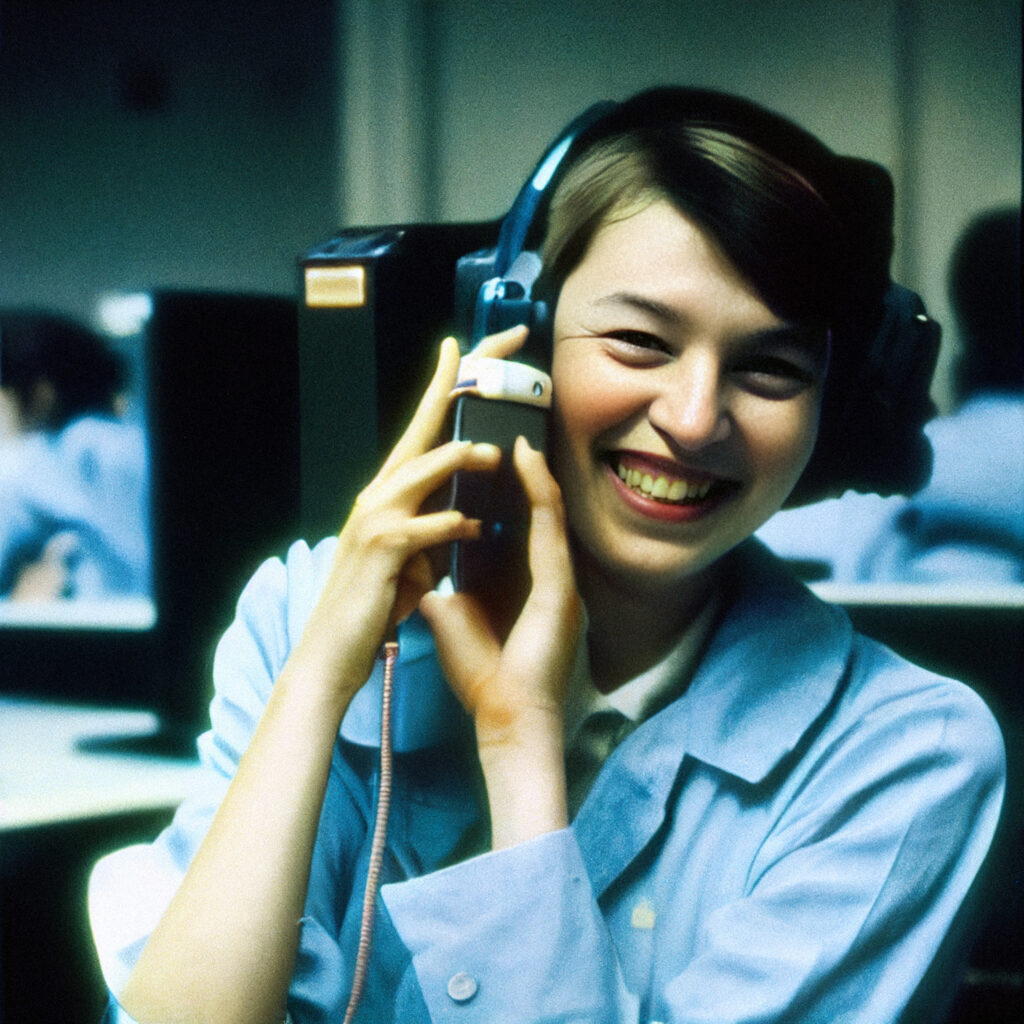
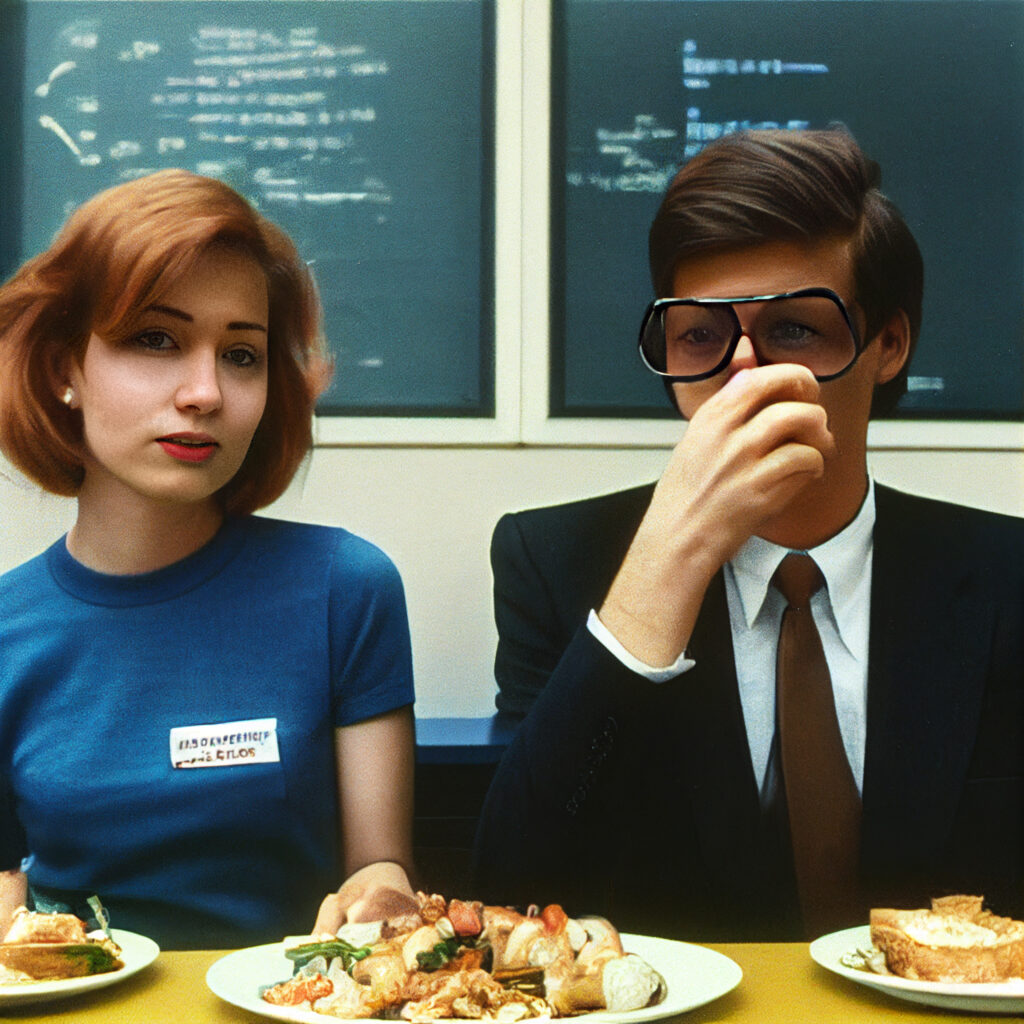
As with AI art, the process of production—beyond what is literally visible to the naked eye—within a painting of a Netherlandish painter of the fifteenth century, was similarly, until recently, invisible. The unknown variables surrounding such Old Master paintings’ creation, of course, have also contributed to their mystique and their value on the modern art market, since its inception into the world. Thinking is work. And while we cannot see any thought process spelled out, literally on the ‘canvas’ of AI art; it is also true that we can also not look at a work of art and see into the mind of any artist, in much the same way. Artists, active today; or those of pre-or early modern, times. Therefore, today’s new, AI-generated artworks are unique creations by human beings. But rather, as with the medium of oil paint, which leaves traces of its process behind… what it is that will help us now and in the future, identify the thought processes that lead to an AI work’s creation? AI art’s processes—just as processes used for a fifteenth-century Netherlandish panel painting were, until recently—remain a mystery. This may explain the current renaissance being undertaken in the recent scholarship of fifteenth-century Netherlandish painters, and those artists’ creative processes—which weren’t possible to know, until recently. Mainly due to the combination of IRRs, and XRF elemental analysis of paint.10 IRRs are infrared reflectograms, which allow us, today, to see the preparatory drawings on a panel, beneath the paint, from former centuries, of the past.11 XRF, or x-ray florescence scanning, allows us to identify literal elements composing colors of oil paint.12 In conclusion, there remain unknowns as to how AI created artworks will be viewed in the future, and indeed if anyone will even care, to know the processes of their creation—drawing parallels to the practice, of Old Master painting connoisseurship. Yet, we should be mindful of an AI art connoisseurship.
Coming back to the idea of AI artists getting their minds dirty, as this essay comes to its conclusion, it seemed reasonable to inquire with the artists interviewed for this essay, how they view their ‘dirty’ work. That is to say, the secrecy around their prompts, which they use to create their works, at the most basic level. Now knowing what traditional art connoisseurship is, in terms of authorship; and having a clearer picture as to how a potential new type of AI connoisseurship, may one day emerge; how secretive are AI artists with their prompts? Seen through the lens of this emerging new type of connoisseurship, focused on AI, which makes use of: understanding ML platforms and the complexities of artworks produced with them; in relation to post-production on the part of the artist, or not; in tandem with the knowledge of the AI art field in general; and specifically, in relation to an AI artist’s oeuvre, compared to only one of their works… What is dirty work—of composing prompts—and how closely are they guarded by these artists? That depends on the artist, their work, and their preferred ML platforms and mediums. Says Francien Krieg, of her methods, ‘When I started using AI, I thought I that I would use it to show everyone how easy it is to make art. I minted some pieces where I added the prompts I used, to give more knowledge to the people about the process behind it. But… then the AI virus got me and I started to really like my AI work, and so I soon discovered that, to make interesting works, it is still difficult and requires certain skills and a feeling for each ML platform. I feel more of a word artist these days, and in my dreams, I often dream in words, now, instead of images. Now I know it is not considered to be polite, to ask AI artists about their prompts—and simultaneously, I would also not want to share my own with anyone, anymore. Because it is something very personal. To find the right combination of words in the right order as a way to find your own voice in AI art. I myself am not there quite just yet, but I’m working hard on getting there, indeed.’
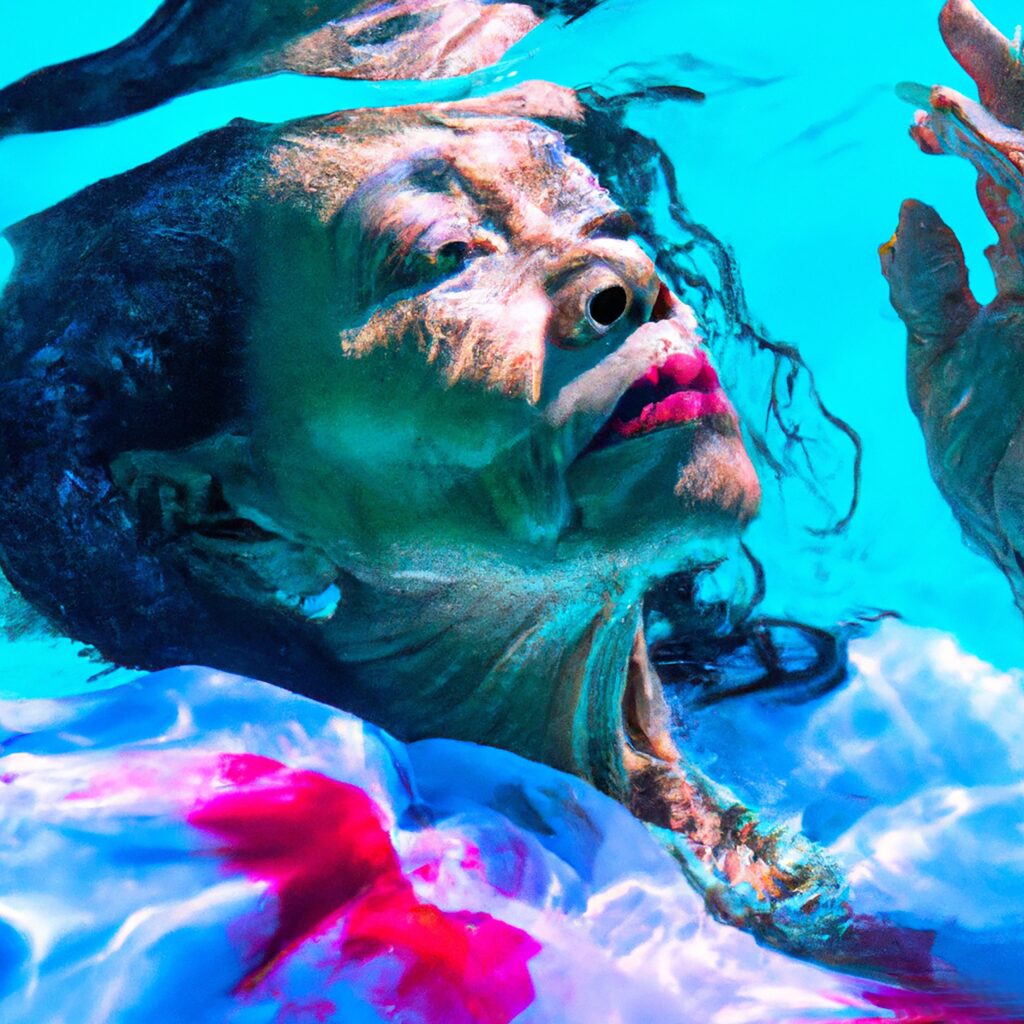
Though, other artists, such as Dehiscence, are more open in their stance toward their prompts. ‘When I was first learning to use AI, I was very thankful to those who shared their images with their prompts. It was a huge asset to have when you’re learning a new technology. My personal opinion on revealing prompts now, is no—for the full prompt. But I will suggest what has worked for me while constructing a prompt or what keywords may work to help build the image you want to create. I think full prompts falls into the off-limits category of sharing my artistic process; people don’t need to know all the magic that happens. Although, because I do quite a bit of post-process editing, I don’t think it would really matter if I did share. Using the prompt alone wouldn’t achieve the same result as I what you see in my artworks.’ Something similar rings true for YankelVision: ‘My first series of DALL·E2 produced works is part of a collection called “This Work Is Not By YankelVision”. As a way of underscoring this idea, all the works in this series include the text of the prompt, which I’d used to create the image. Some of my other AI works do not include the prompt, but this is not because I view them as a secret to the trade per se. I can see why some artists might not want to share their prompts, but I lean toward sharing or indifference. One of the strengths and delights of working with DALL·E2 I think, is that you can use the same prompt over and over again, and you will not be able to reproduce the image that was produced when I used the prompt. And that, I believe, raises interesting questions and ideas about what AI models are creating.’ Marco, Olena, and Ai Machina, however, prefer to keep prompts to themselves, with Olena summating that, ‘When it comes to AI, “the prompt” is a magic wand, so to speak, which should only have one master.’
Which ML program has produced an AI artwork may become an important identifier in the future, but it’s currently beyond the point. Unless an artist gives away their thought process of how an AI work of theirs was created; prompts that generated the image—derived from the artist’s (and not AI’s) personal and very subjective experience, and as long as it remains unknown, hidden in the mind of the artist from a viewer—the genesis of an AI-generated work of art, when it comes to the actual work on the part of a human who created it (that is, their thought processes; their ‘work’) remains invisible. Much like, the underdrawings of Old Master paintings, which until the mid-twentieth century, were also invisible. The thesis here is that an AI-generated work—the thinking up of it; the process; the genesis of an artwork, if you will—remains a mystery to us, at this moment. As the field and output of AI art, as deemed as such by its creators, continues to expand; knowing how and with which platforms a work was made—at some point in the future—may be important when assessing a work’s value, such as for at a sale or at auction. AI art connoisseurship would, like Old Master art connoisseurship, also take into account a work of art’s prior sales and points of exhibition across space, and time; making it a holistic practice. While perhaps of little use, in 2022, future AI art connoisseurship, will become increasingly valuable for the experience and knowledge that its practitioner brings to the profession—especially as legacy auction houses, continue to establish web3 departments. Rather than being focused on authenticating a work of art’s creator, like connoisseurs of centuries past; connoisseurs specialized in AI art in the near future, will be a sort of hybrid between today’s art appraisers and curators, lending their expertise in these two areas to auction houses and other legacy institutions that will need experts to assist in evaluating—both monetary and otherwise—the value of the art in question, the artist who created it, and the importance of such art within the wider-AI art spectrum. It is hoped that, opposed to today’s myopic discussions of ‘is AI art, art?’, that in the not-too-distant-future, a new type of connoisseur will evolve within the field of AI art; one with the depth of knowledge of AI production and all the nuances that it entails, who can also serve as an authority on this new form of human-mind–designed art, which just so happens, to be created in collaboration with technology. If such a situation arises, of course, remains a question, for the future.
- ‘Photography as an aid to Portrait Painting’, The New York Times, 24 June 1866.↑
- Esther Pasztory, ‘Thinking with Things’, in Thinking with Things (Austin: University of Texas Press, 2005), 8-9. ↑
- Ai Machina, ‘A Weekly AI Collective’, Twitter Spaces, 27 Nov. 2022. https://twitter.com/BKanizay/status/1595559873374216194↑
- Kevin Buist, ‘The Trouble with DALL-E’, Outland, 11 August 2022. https://outland.art/dall-e-nfts/↑
- Anne Higonnet, ‘The Social Life of Provenance’, in Provenance: an Alternative History of Art, ed. Gail Feigenbaum and Inge Reist (Los Angeles: Getty Research Institute, 2012), 195. Inge Reist, ‘Researching the History of Art Collecting’ (Lecture, Philadelphia Museum of Art, Philadelphia, USA, 4 Nov., 2014). ‘[The history of collecting] is a different kind of research… [it] has changed over the centuries, as middle class collectors have gained self awareness, and as the role of middle men, such as advisors and dealers have also become a necessary element of inquiry in this field. It truly is Ariadne’s thread… because it launches us into a maze–much more pleasant than the one Theseus negotiated–of primary documents and studies on market research. Telegrams… letters, auction catalogues, exhibition ephemera, newspaper reviews, and photo archives–all are in play.’↑
- Max J. Friedländer, On Art and Connoisseurship (Boston: Beacon Hill Press, 1942). The book can be read in its entirety online at: https://archive.org/details/onartandconnoiss009325mbp↑
- Giorgio Vassari, Lives of the Most Excellent Painters, Sculptors, and Architects (Florence: Lorenzo Torrentino, 1550). This tradition, of compiling artists’ biographies and discussing the formal aspects of their works, was carried over to Northern Europe during its own Rennaissance, by the Haarlem, Dutch Republic-based artist, Karel van Mander in his Schilder-Boeck, of 1604: Karvel van Mander, Het Schilder-Boeck (Haarlem: Passchier Wesbusch, 1604).↑
- Anna Tummers, The Eye of the Connoisseur: Authenticating Paintings by Rembrandt and His Contemporaries (Los Angeles: Getty Publications, 2008), 16. This remains the most comprehensive book on the connoisseurship of western art since the sixteenth century to have been published within the last fifteen years; mainly, of oil paintings.↑
- Catherine Scallen, Rembrandt, Reputation, and the Practice of Connoisseurship (Amsterdam: Amsterdam University Press, 2003), 91. This is the most comprehensive look at how connoisseurs of Dutch Old Master paintings operated within and outside of art museums during the first decades of the twentieth century.↑
- J. R. J. van Asperen de Boer, ‘Infrared Reflectograms of Panel Paintings’, Studies in Conservation 11, no. 1 (Feb. 1996): 45-46.↑
- J. R. J. van Asperen de Boer, ‘Towards Improved Infrared Reflectograms’, Studies in Conservation 38, no. 3 (Aug. 1993): 145-54.↑
- Aaron N. Shugar and Jennifer L. Mass (eds)., Handheld XRF for Art and Archaeology (Leuven: Leuven University Press, 2012).↑